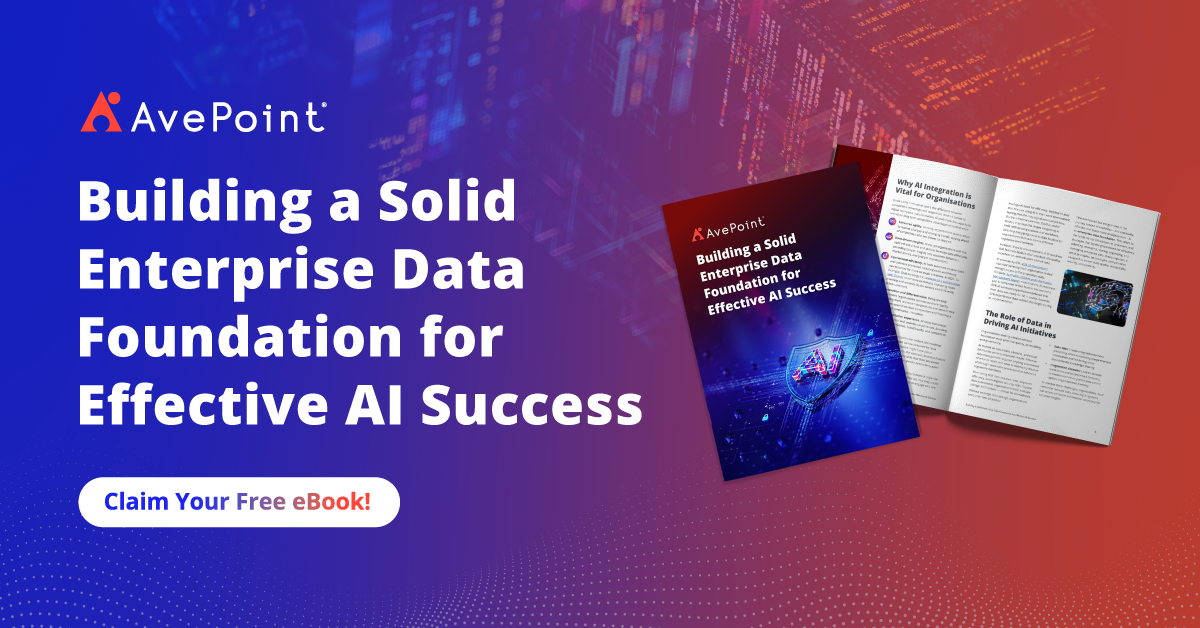Have you ever wondered about how much poor data quality costs enterprises every year? It averages US$12.9 million annually according to Gartner. This highlights the steep price of fragmented, inconsistent data — draining efficiency, wasting resources, and blocking both competitive advantage and successful AI adoption.
Moreover, Gartner also predicted that by 2025, over 80% of enterprises will have deployed generative AI (GenAI) application programming interfaces (APIs) or models, and will have used GenAI-enabled applications in production — a sharp rise from less than 5% in 2023.
Truth be told, AI is only as effective as the data it relies on, making data quality critical for sustainable and impactful AI deployments. As AI adoption accelerates, organisations face two key challenges:
- Data silos, which limit AI’s access to information and block cross-departmental knowledge sharing.
- Fragmented datasets, which lead to inaccurate predictions from AI models trained on incomplete, unrepresentative data.
In this blog, we’ll explore how centralising data helps overcome these challenges, ensuring data quality, improving security, and maximising the value and accuracy of your AI outcomes.
Data Accessibility: The Foundation of Enterprise AI Success
At the heart of every successful AI implementation lies a fundamental truth: data must be accessible. Like a library with books locked away in scattered, incompatible vaults, even the most valuable enterprise data becomes worthless when it cannot be effectively retrieved, shared, and analysed.
True data accessibility doesn’t happen by accident — it emerges from the deliberate orchestration of three critical components working in harmony: integration, interoperability, and backup. When these elements align, organisations transform isolated data points into a dynamic, cohesive ecosystem that fuels innovation. Here are the key components that underpin this essential process:
1. The Power of Integration: Unifying the Data Landscape
Data integration serves as the great connector, bringing together information from databases, applications, and systems that were never designed to communicate. This unification creates a comprehensive view that reveals patterns and insights previously hidden in organisational silos.
When integration is successful, the benefits ripple throughout the enterprise:
- Comprehensive perspective. Decision-makers gain access to a 360-degree view that illuminates opportunities and challenges from every angle, while AI technologies access the full spectrum of organisational knowledge.
- Enhanced data quality. Integration processes identify and resolve inconsistencies and redundancies across sources, ensuring AI systems learn from accurate information rather than propagating existing errors.
- Streamlined management. Centralisation allows organisations to maintain and update information more efficiently, reducing the complex and time-consuming administrative burden on IT teams.
- Improved security and compliance. Integration enables more consistent monitoring and permission management, reducing unauthorised access risks while ensuring regulatory compliance.
- Advanced analytics. With properly integrated data, AI and machine learning models can harness diverse data volumes to generate actionable insights with unprecedented accuracy.

2. Interoperability: Ensuring Seamless Data Flow
While integration brings data together, interoperability ensures it can move freely between systems without friction. This capability breaks down technical barriers that would otherwise restrict the value of organisational information assets.
To foster truly collaborative environments where your organisation can leverage information assets to their fullest potential, prioritise these essential interoperability areas:
- Standardised data formats. Implement consistent data formats and protocols to simplify the combination and analysis of information from multiple sources. With AI tools requiring uniform data to deliver accurate insights, these standardised formats become non-negotiable for success.
- Optimised data exchange. Effective interoperability goes beyond basic system coordination. It ensures seamless information exchange without compromising data integrity or functionality, creating frictionless information flow throughout your organisation.
- Scalability and flexibility. To move beyond pilot-stage AI initiatives and unlock sustainable business advantages, your systems must adapt easily to new data sources and emerging innovations. Properly interoperable architectures enable this flexibility, allowing you to integrate fresh data streams without extensive reconfiguration.
- Refined data processing. By reducing the need for manual data transformation and cleansing, interoperability streamlines your entire data integration process. This efficiency becomes particularly crucial when preparing the extensive datasets required for effective AI training and analysis.
3. Data Backup: Essential Protection in an Era of Growing Threats
As cyberthreats increase in number and sophistication, manual backup approaches are no longer viable. With 28% of organisations experiencing data loss in 2024 — up 14% compared to 2023 as reported by Deloitte — and cyberattack damages predicted to reach $10.5 trillion annually by 2025, robust backup strategies deliver critical advantages:
Swift recovery. Automated backups enable quick restoration after data loss incidents, minimising operational disruption.
Corruption protection. Regular backups safeguard information from hardware failures, software vulnerabilities, and cyberattacks.
Regulatory compliance. Consistent backup processes help organisations meet industry-specific data retention requirements and avoid penalties.
Cost reduction. Investing in automated solutions prevents expensive recovery services and revenue losses from extended downtime.
Ultimately, effective data management ensures clean, complete, and accessible information, helping you to establish a strong foundation for successful AI implementation.

From Concept to Competitive Advantage: The Road Ahead
When integration, interoperability, and robust backup combine effectively, data accessibility transforms from an abstract IT concept into a tangible competitive advantage. Organisations gain the ability to leverage secure, complete information assets, feeding AI systems with the high-quality data they require.
This accessibility empowers people and gives business users confidence in their decisions, allowing data scientists to focus on insights rather than data wrangling, and providing leadership with reliable intelligence.
In today’s AI-driven marketplace, data accessibility isn’t merely a technical consideration but an essential foundation that enables successful digital transformation. Organisations that excel at integration and interoperability position themselves to extract maximum value from both their existing data assets and their AI investments.
Discover how to build a secure and effective enterprise data foundation for AI success. Download our free eBook now for actionable insights and strategies.


